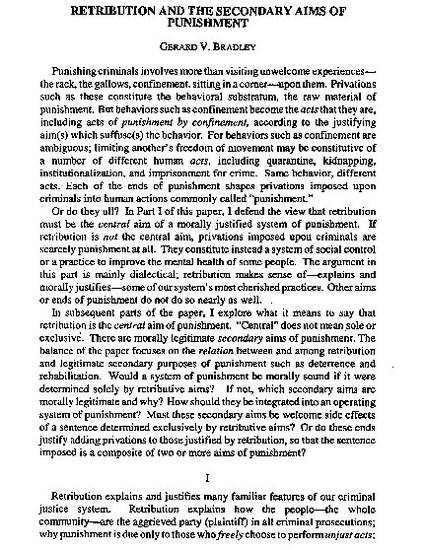
Punishing criminals involves more than visiting unwelcome experiences–the rack, the gallows, confinement, sitting in a corner–upon them. Privations such as these constitute the behavioral substratum, the raw material of punishment. But behaviors such as confinement become the acts that they are, including acts of punishment by confinement, according to the justifying aim(s) which suffuse(s) the behavior. For behaviors such as confinement are ambiguous; limiting another's freedom of movement may be constitutive of a number of different human acts, including quarantine, kidnapping, institutionalization, and imprisonment for crime. Same behavior, different acts. Each of the ends of punishment shapes privations imposed upon criminals into human actions commonly called “punishment.”
Or do they all? In Part I of this paper, I defend the view that retribution must be the central aim of a morally justified system of punishment. In subsequent parts of the paper, I explore what it means to say that retribution is the central aim of punishment. The balance of the paper focuses on the relation between and among retribution and legitimate secondary purposes of punishment such as deterrence and rehabilitation.
Available at: http://works.bepress.com/gerry_bradley/18/

Reprinted with permission of American Journal of Jurisprudence.